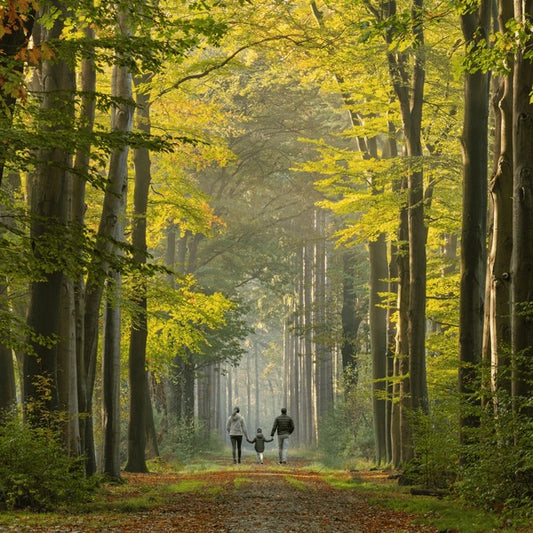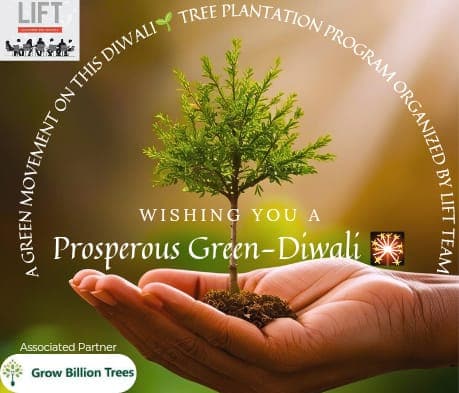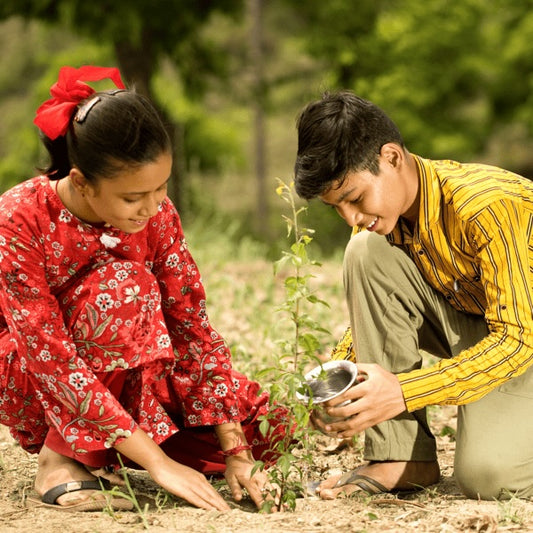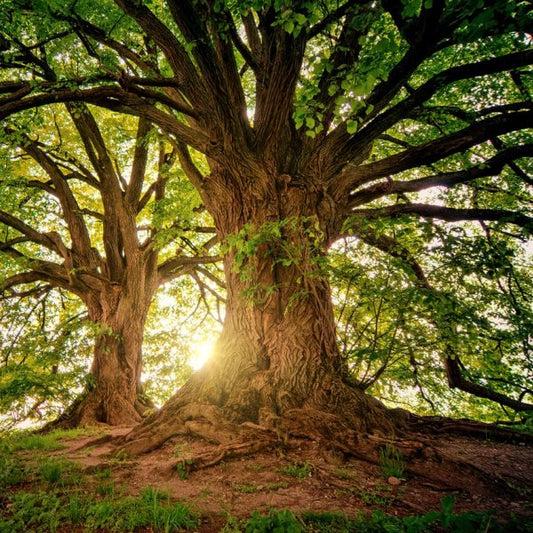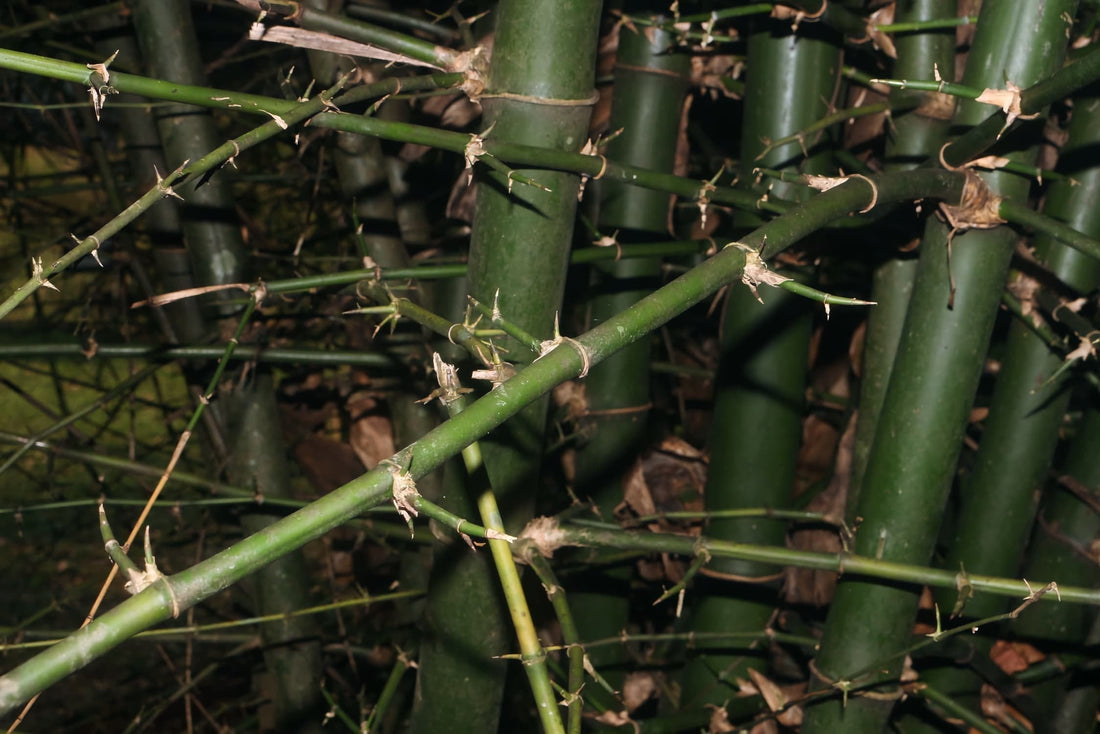

India’s landscapes are home to a remarkable plant species that blends rugged toughness with ecological brilliance — the Giant Thorny Bamboo, scientifically known as Bambusa bambos. This towering species of bamboo, often referred to as Indian Thorny B Read more
Trending
Trees for Corporates
Giant Thorny Bamboo / Indian Thorny Bamboo: A Thorny Giant With a Gree
India’s landscapes are home to a remarkable plant species that blends rugged toughness with ecological brilliance — the Giant Thorny Bamboo, scientifically known as Bambusa bambos. This towering species of bamboo, often referred to as Indian Thorny Bamboo or Spinous Bamboo, has been part of India’s rural and forest ecosystems for centuries. Revered for its strength, utility, and environmental significance, this bamboo deserves a spotlight of its own.
In this detailed blog, we’ll explore the Giant Thorny Bamboo's botanical profile, growth habits, ecological roles, uses, fun facts, and more.
🌿 Scientific Classification & Common Names
-
Scientific Name: Bambusa bambos
-
Family: Poaceae (grass family)
-
Common Names:
-
Indian Thorny Bamboo
-
Giant Thorny Bamboo
-
Spinous Bamboo
-
“Veduru” in Telugu
-
“Moongil” in Tamil
-
“Bans” in Hindi
-
-
Native to: India, Sri Lanka, Bangladesh
-
Height: Can reach up to 30 meters (98 feet)
-
Clump diameter: Up to 6 meters wide
-
Lifespan: Each culm lives for 5–7 years, but the clump can live for decades.
🌱 Botanical Features & Growth Pattern
Giant Thorny Bamboo is a fast-growing, tropical clumping bamboo species. It is easily recognized by its:
-
Thick, tall culms (stems): Each culm can grow up to 20–30 meters tall.
-
Sharp thorns: Present at the nodes of younger culms, offering natural protection.
-
Dark green leaves: Narrow and lance-shaped.
-
Clumping nature: Unlike running bamboos, Bambusa bambos spreads slowly, forming dense clumps.
This species prefers moist, well-drained soil and thrives in tropical and subtropical climates. It grows rapidly during the monsoon season and is drought-resistant once established.
🏛️ Historical & Cultural Relevance
Bamboo has been a part of Indian life since ancient times. In Vedic texts, bamboo is referred to as “Veṇu,” a sacred plant associated with Lord Krishna, who played a bamboo flute.
The Indian Thorny Bamboo, in particular, was:
-
Used in ancient warfare: The long, thorny poles were sometimes used as spears or barricades.
-
A builder’s friend: Villages across South India traditionally used Bambusa bambos for house frames, scaffolding, and furniture.
-
A symbol of resilience: Due to its tough nature, bamboo symbolized endurance and strength in folklore.
🔬 Scientific & Economic Importance
Indian Thorny Bamboo isn’t just a wild beauty — it plays a significant role in forestry and economics.
🌾 1. Renewable Resource
-
A single culm matures in just 3–4 years.
-
Once harvested, new shoots emerge rapidly.
-
Makes it a sustainable substitute for timber in many applications.
💰 2. Economically Valuable
-
Used in the paper and pulp industry.
-
Vital for handicrafts and woven products.
-
Increasingly used in bio-construction and green building projects.
-
Provides livelihood to thousands in rural India.
🌍 3. Carbon Sequestration
-
Bamboo absorbs 35% more CO₂ than trees.
-
Helps mitigate climate change.
-
Releases 30% more oxygen than trees of similar size.
🌳 Environmental Impact & Ecological Role
Giant Thorny Bamboo plays a powerful role in India’s forest ecosystems.
🛡️ 1. Soil Conservation
-
Dense root networks bind the soil.
-
Prevents soil erosion, especially on slopes.
-
Ideal for riverbanks and degraded lands.
🌾 2. Rejuvenates Barren Lands
-
Can grow in marginal, degraded, or nutrient-poor soils.
-
Helps in restoring land fertility over time.
🌧️ 3. Water Regulation
-
Improves groundwater recharge.
-
Acts as a natural rainwater harvester due to its clumping pattern.
🐘 4. Wildlife Habitat
-
Provides shelter to birds, reptiles, and small mammals.
-
Young shoots are food for herbivores like elephants and deer.
🤩 Fun Facts About Giant Thorny Bamboo
-
🌿 Fastest grower: Can grow up to 90 cm (3 ft) per day under optimal conditions!
-
🦯 Used for martial arts weapons: Its tough poles are ideal for practice staffs.
-
🏠 Earthquake-resistant homes: Houses built with bamboo show better flexibility and shock absorption.
-
🎶 Krishna’s flute: Mythology says Lord Krishna’s divine flute was made from bamboo.
-
🔥 Natural firebreak: In some regions, bamboo clumps act as natural fire barriers due to their high moisture content.
📈 Bamboo Plantations in India: Growing Trend
With the increasing push for afforestation and carbon neutrality, the Indian government has promoted bamboo farming under schemes like:
-
National Bamboo Mission (NBM)
-
Mahatma Gandhi National Rural Employment Guarantee Act (MGNREGA)
-
State-level agroforestry policies
Giant Thorny Bamboo is ideal for:
-
Agroforestry
-
Wasteland reclamation
-
Carbon farming
States like Maharashtra, Chhattisgarh, Assam, Madhya Pradesh, Karnataka, and Odisha have seen significant growth in bamboo cultivation.
🌍 Role in Sustainable Development Goals (SDGs)
Bambusa bambos contributes to several SDGs:
-
✅ SDG 1: No Poverty (provides income opportunities)
-
✅ SDG 13: Climate Action (carbon sink, climate resilience)
-
✅ SDG 15: Life on Land (restores biodiversity)
-
✅ SDG 12: Responsible Consumption and Production (sustainable wood alternative)
🔥 Challenges and Threats
Despite its benefits, Indian Thorny Bamboo faces challenges:
-
Overharvesting without proper management
-
Lack of awareness among farmers about commercial potential
-
Pests and fungal infections in humid areas
-
Inadequate market linkages for bamboo-based products
Efforts are ongoing to create farmer-producer organizations, improve supply chains, and encourage value-added products like bamboo flooring, charcoal briquettes, and packaging.
🪴 How to Grow Giant Thorny Bamboo at Home or Farm
If you’re thinking of cultivating this magnificent bamboo, here’s a quick guide:
-
Propagation: Seeds or culm cuttings
-
Soil: Loamy, well-drained, rich in organic matter
-
Sunlight: Full to partial
-
Watering: Regular in early growth, drought-tolerant later
-
Spacing: At least 6–8 feet apart
-
Maintenance: Remove dead culms annually, mulch base to retain moisture
Ideal for boundary plantation, windbreaks, and large gardens.
🧠 Expert Tip: Detox Before Consuming Shoots!
Although the young bamboo shoots are edible, they contain cyanogenic glycosides which can release cyanide. Boil the shoots thoroughly or ferment them before consumption to remove toxins.
🔚 Conclusion
The Giant Thorny Bamboo is more than just a giant grass — it’s a green powerhouse. From climate change mitigation to supporting local economies and restoring degraded lands, Bambusa bambos stands tall as a symbol of sustainability, strength, and tradition.
As the world moves toward greener solutions, embracing bamboo — especially native giants like Indian Thorny Bamboo — could be a game-changer. Whether you are a farmer, entrepreneur, or eco-conscious citizen, this spiky giant might just be the future we’re looking for. 🌿
Giant Thorny Bamboo uses
From building homes to making paper and fences, this spiky marvel is India’s ultimate eco-toolkit. It’s tough, versatile, and works harder than your office Wi-Fi.
Bambusa bambos cultivation
Got sun, space, and patience? You’re ready to grow this green beast. It thrives in poor soil, grows fast, and turns barren land into a bamboo jungle.
Fastest growing bamboo India
Blink and it’s taller — this bamboo shoots up 3 feet a day in peak season. It’s India’s green speedster with serious climate-cooling cred.
Indian bamboo for construction
Stronger than it looks, this bamboo builds roofs, walls, and dreams. Lightweight, shockproof, and sustainable — it’s the architect’s green crush.
Thorny bamboo paper industry
Who knew your notebook had thorns? This bamboo’s fiber makes excellent paper pulp, keeping forests safe and offices stocked.
Bambusa bambos in agroforestry
It plays nice with crops and cattle. This bamboo adds shade, improves soil, and boosts farm income like a leafy side hustle.
Carbon absorption by bamboo
This green machine eats CO₂ for breakfast. It absorbs more carbon and pumps out more oxygen than most trees — no photosynthesis flexing needed.
Bambusa bambos for erosion control
Its roots grip like a pro, holding soil tight on hillsides and riverbanks. A natural, leafy solution to landslide drama.
Thorny bamboo in Indian mythology
Linked to Lord Krishna’s flute and village legends, this bamboo isn’t just practical — it’s sacred and storied.
Medicinal uses of thorny bamboo
Grandma was right — bamboo ash helps with wounds and ulcers. Modern uses may vary, but the ancient healing tale sticks.
Thorny bamboo vs timber
Faster to grow, lighter to transport, and way greener — this bamboo beats timber in the sustainability game without breaking a branch.
Bambusa bambos plantation profit
Farmers love it for its low input and high yield. Once it matures, it’s like having a spiky ATM in the backyard.
FAQ
What is Giant Thorny Bamboo and why is it called that?
Because it's a giant grass with an attitude. Officially known as Bambusa bambos, this bamboo grows up to 30 meters tall and has thorny nodes that protect it like nature’s built-in security. It’s called “thorny” because hugging it might just end your love story early.
Is Giant Thorny Bamboo native to India?
Absolutely! It’s as Indian as chai and monsoons. Native to India and Sri Lanka, this bamboo has been rooted in our culture, forests, and fences for centuries. It’s the OG eco-warrior of Indian landscapes, thriving across states and legends.
How fast does Giant Thorny Bamboo grow?
Faster than your weekend plans fall apart. Under ideal conditions, it can shoot up by nearly 90 cm a day. It’s one of the fastest growing bamboo species in India — great for farmers, scary for your garden space.
Can Giant Thorny Bamboo be used for construction?
Yes, and how! Its strong, straight culms are perfect for scaffolding, roofing, and even bamboo houses. It’s shock-absorbent, termite-resistant, and stylish in a rustic, eco-friendly kind of way. Basically, it’s like sustainable rebar with leafy flair.
Is it good for the environment?
Oh yes, it’s an eco-champion. It absorbs more carbon dioxide and releases more oxygen than most trees. Plus, its roots prevent erosion, restore degraded lands, and even recharge groundwater. It’s not just green — it’s green with purpose.
What are the main uses of Indian Thorny Bamboo?
From paper to pickles, this bamboo does it all. It’s used in construction, crafts, fencing, pulp making, edible shoots, and even traditional medicine. If plants had resumes, this one would need a few extra pages.
Is it safe to grow at home or farms?
Yes — just don’t plant it too close to your walkway or your neighbor’s fence. The thorns are sharp, but it’s non-invasive and easy to manage. Plus, it makes an excellent windbreak and privacy wall.
How does it compare to traditional timber?
Think of it as timber’s smarter, faster cousin. It matures quicker, is easier to harvest, and has a lower carbon footprint. It’s lighter, flexible, and more sustainable — ideal for construction with a conscience.
Does Giant Thorny Bamboo have any cultural importance?
Definitely. It’s mentioned in ancient Indian scriptures, associated with Lord Krishna’s flute, and deeply rooted in rural traditions. It’s not just a plant — it’s part of India’s folklore and festivals.
Are the shoots edible?
Yes, but only after detox! The young shoots are edible once boiled or fermented to remove cyanide compounds. Once safe, they’re turned into delicious pickles or curries — spicy with a side of adventure.
What kind of soil and climate does it need?
It loves the tropics — warm weather, good rain, and well-drained loamy soil. It can tolerate poor soils too, making it ideal for degraded lands. Basically, if monsoons show up, so will this bamboo.
Is Giant Thorny Bamboo profitable for farmers?
Absolutely. It requires low input, grows quickly, and has a strong market for poles, shoots, and biomass. Once mature, it’s like farming a green ATM — just plant, wait, and cash in.
Most Popular
Connect with us
-
👥 Corporates
If you are looking for:
- 🌲 Tree Plantation Events
- 📊 CSR Projects
📧 corporate@growbilliontrees.com
📞 +91 9699723523
💬 +91 9370599291 WhatsApp (Only)
🕒 Mon - Sat | 10am - 7pm IST
-
🧩 Tree Plantation NGOs
If you are looking for:
- 💰 Financial Assistance
- 🤝 Operational Support
📧 support@growbilliontrees.com
📞 +91 9699723523
💬 +91 9370599291 WhatsApp (Only)
🕒 Mon - Sat | 10am - 7pm IST
-
🌼 Individuals
If you are looking for:
- 👥 Group Tree Plantation Drive
- 🌳 Bulk Tree Plantation
📞 +91 9699723523
💬 +91 9370599291 WhatsApp (Only)
🕒 Mon - Sat | 10am - 7pm IST
- Choosing a selection results in a full page refresh.
- Opens in a new window.




